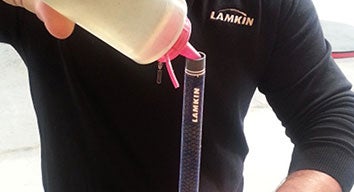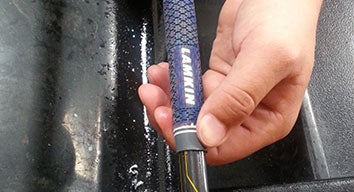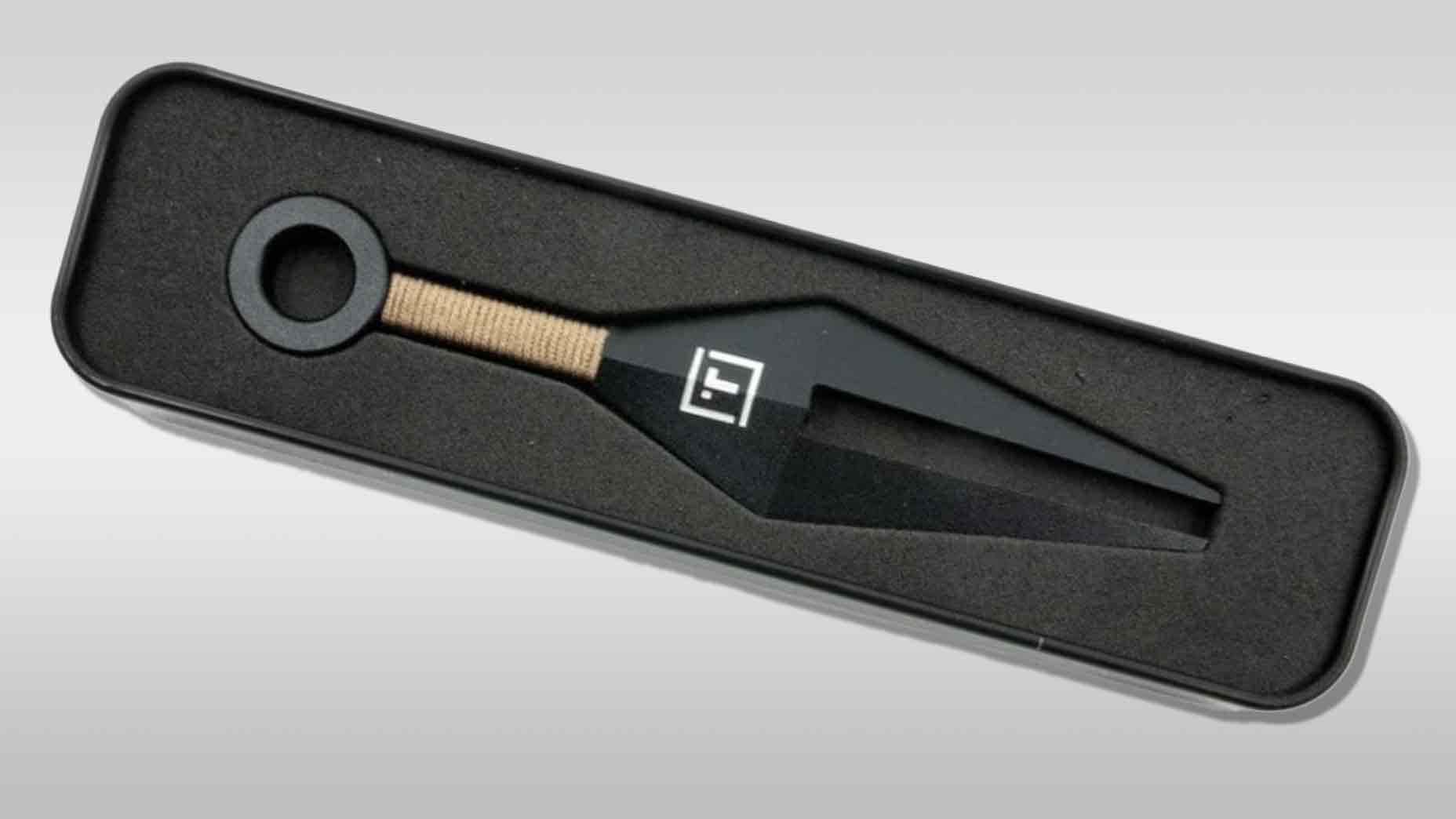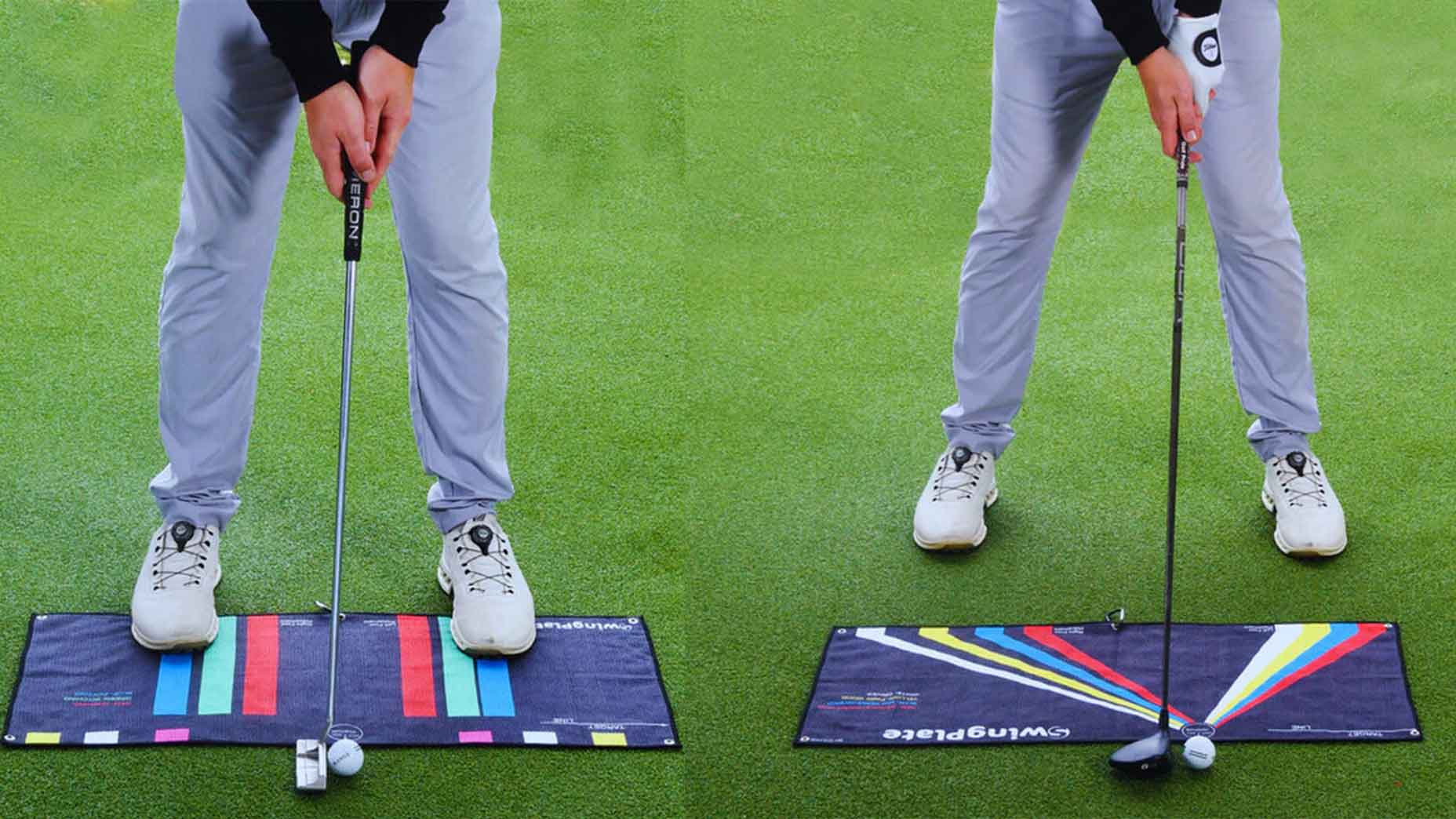 This rangefinder is like having a caddie in your pocket — and it’s on sale
This rangefinder is like having a caddie in your pocket — and it’s on sale
How to Regrip Golf Clubs: Top 4 Points to Consider

Tires are the only point of contact between a vehicle and the road. Astute motorists monitor tire pressure and watch for tire damage. When it’s time to replace tires, they consider tread design, tire rating, longevity and more.
Bad grips, like bad tires, impact performance. The grip is the only point of contact between the player and the club. Too often, golfers tolerate overly-worn and sometimes even torn grips, which can make them slippery and impact performance.
Ask yourself, do your grips get the attention they deserve? Do you need to clean your golf grips, or to replace them? Sometimes, grips just need a good cleaning. Eventually, skin oil, grime and sunscreen get embedded in your grips. Lost surface tack leaves you instinctively gripping the club too firmly. When cleaning no longer restores tackiness, it’s time to regrip golf clubs.
Excessive grip pressure at the heel of your hand will often shorten a glove’s lifespan. It may also wear a spot on your grip that requires replacement. Correctly gripping the club may lower your handicap and reduce the wear and tear on gloves and grips.
Use this step-by-step guide answering how to regrip golf clubs to develop a grip that balances comfort, stability and control.
How to Choose Golf Grips to Regrip a Golf Club
A player must sort through key variables to come up with the right golf grips.
Size
Select from oversized, midsize, standard and undersize grips based on your hand size. Build-up tape allows for more precise fitting between sizes.
When you grip the club, your fingertips should gently be touching the base of your thumb. If they dig in to your hand too much, your grip is too small; if your fingers don’t touch your hands, your grips may be too large. Use the wrong sized grips, and game will suffer along the way.
A grip that’s too narrow a grip may promote a pull, while too wide a grip may cause a push or slice. Note that too wide a grip may inhibit proper wrist action, reducing distance in the process. However, some players select wider grips to better cope with medical conditions like arthritis.
Your trusted PGA Professional is a source of expert sizing information. Or, try Lamkin’s Interactive Grip Selector.
Texture
Grip selection often involves finding the right balance between feel and club security. Any lateral movement of the grip in the hands during the swing spells trouble. Still, strangling the club with excessive grip pressure is counterproductive. Keep in mind that the needs of a hard-swinging adolescent may be very different from those of a retiree with a more languid swing.
Gloving habits also influence the choice of textures. It’s most common to glove your lead hand. Some players play bare-handed, while in rare cases, some golfers play with gloves on both hands for added grip. Almost all tour pros wear a golf glove on their lead hand.
Firmness
In general, the higher the swing speed, the greater the need for torsion control. A firm grip allows for stability even when combined with the lighter grip pressure typically preferred by better players.
A soft grip may cause excessive torque at higher swing speeds. Still, those with slower swing speeds and/or less hand strength may want softer, tackier grips. For them, torsion control is less of an issue.
With the wrong grip, you may use too firm a grip without even realizing it. You’re compensating for the lack of stability in a grip that is too soft for your swing.
Prevailing weather
Golfers that often play in wet or humid weather may favor the coarse texture of a corded grip. If you ever witnessed a club fly out of a player’s hands at impact, you know the importance of a tacky and/or textured grip. Any movement during the swing can quickly sabotage the shot.
However, some players find that the texture of a corded grip is too hard on their hands, particularly if they firmly grip the club. Some plastic and polymer grips get slippery in the rain. Smooth grips may require the occasional application of a tack spray.
Types of Golf Grips
Today’s manufacturers use a wide variety of natural and synthetic materials to fabricate golf grips. Players look for a balance between feel, durability, tackiness, torsion-resistance and vibration damping.
There are four general categories of golf grips: wrapped, rubber, corded and hybrid.
Wrapped
Genuine leather wrapped grips remain popular. However, manufacturers also use synthetic materials molded in a wrapped design. Synthetic materials are often less vulnerable to temperature and humidity extremes.
Rubber
Rubber grips are the most common, in part because they are often the most economical. Rubber grips come standard on many sets of clubs sold to everyday players. High-quality rubber grips offer the grip stability that many golfers appreciate.
Corded
Coarse, corded grips deliver needed traction control in adverse weather conditions. They wick away moisture into the gaps between the cords. Golfers who play in wet or hot, humid conditions often favor corded grips. Players with strong swings that generate high swing speeds often prefer corded grips.
Hybrid
To some degree, the fingers and the palm of your hand have different needs. Hybrid golf grips address this with a firm cord upper for control and a soft rubber lower for comfort.
How to Regrip Golf Clubs
Once you’ve selected the golf grip you prefer, it’s time to proceed. To regrip golf clubs is a simple, straightforward process. Once you’re familiar with the process, it’s possible to regrip golf clubs in a matter of minutes.
You may want to entrust the task to your golf pro. Choose a PGA golf professional to provide and install new golf grips, and you’ll get the benefit of his/her considerable expertise. A pro can guide you through the many available grip options. A PGA professional can also help you with common questions. Should you replace a worn out grip with the same style? Or, is it time to look at a golf grip that better suits your game?
If you are confident in your selection of the new golf grip(s) you need, consider the DIY approach.
You’ll need:
- Vise equipped with rubber vise clamps
- Utility knife or straight blade
- Deactivating grip solvent & a clean cloth
- Two-sided grip tape (¾’ or 2”), and 1/64” build-up tape if needed
Rubber vise clamps are essential to protect the club’s shaft and to prevent it from rotating. If you have graphite shafts, it’s better to use a hook blade to cut into the old grip. You may want to wear rubber gloves to avoid contact with the deactivating solvent.
1. Remove old grip

Clamp the shaft near the lower end of the grip. Point the face of the club toward the floor. Cut the old grip open. Cutting into a rounded surface requires care. For safety’s sake, don’t cut toward your body. Avoid cutting into a graphite shaft. Peel off the old grip and scrape the tape away. Remove the remaining residue with grip solvent and a clean cloth.
2. Apply grip tape
ADVERTISEMENT
Size up the new grip to determine how much of the shaft requires taping. Apply ¾” grip tape in a spiral pattern from the top of the shaft to the point where the grip will end. Apply 2” grip tape lengthwise. Remove the paper backing. Add a little extra tape to the end of the shaft.
First, use build-up tape if you want to increase the final width of the new grip. It also comes in ¾” and 2” widths. Once again, apply the ¾” width in a spiral pattern. Apply the 2” width lengthwise. Each layer adds 1/64” to the size of the grip. Layer the tape to achieve the desired thickness.
3. Apply solvent

Use a golf tee to plug the hole at the end of the grip. Pour solvent into the open end of the grip. Cover the open end with your hand and shake to distribute the solvent. Remove the tee and pour the excess solvent onto the grip tape on the shaft. Put a tray under the clamped shaft to catch excess solvent. If you are regripping more than one club, use the excess solvent on the other clubs.
4. Slide grip into place

While the grip tape is still wet, roughly align the grip and pull it down over the butt end of the shaft. Make sure the end of the shaft nestles into the very end of the grip. Fine-tune the alignment so the clubface and grip are square. You’ll have approximately one minute before the tape is no longer slippery. Allow the new grip to dry for several hours.
5. Go out and play
This is the fun part. Head to the first tee and start playing with your regripped clubs!
Alternative methods
You don’t have to use traditional grip solvents. There are also environmentally friendly solvent alternatives like soapy water and compressed air. The big difference is in wait times. The solvent-based approach requires about two hours of drying time. The water-based approach requires about 24 hours of drying time. The use of compressed air eliminates drying time altogether.
The water-activated method requires a couple of tablespoons of dishwashing detergent in a quart of clean water. Apply the solution to the grip tape. Slide the new grip in place.
If you have a source of compressed air, get a specially-designed pressure tip from a golf supplier. Attach it to the compressed air source, and insert the other end into the hole in the butt end of the grip. The compressed air will expand the new grip, allowing you to slip it over the grip tape. As you pull out the pressure tip, the grip returns to normal size, tightly adhering to the grip tape. It is possible to use the compressed air method to remove old grips as well.
Cleaning Golf Grips
Once you replace your grips, you’ll want to keep them clean. Enjoy improved performance and extended service life with regular cleaning. Traditional black grips often concealed soiling. Today’s brightly colored grips draw attention to dirt and grime, and that’s a good thing. Players with colorful grips may be more likely to clean them to maintain their appearance.
In all cases, it’s wise to clean your golf grips on a regular basis. Use grip cleaning wipes or opt for a large bucket of warm water. Use a soft-bristled brush for corded or rubber grips and a washcloth for softer grips. After washing each grip, rinse it with clean water. Dry with a clean towel, and head out to the course!
ADVERTISEMENT




